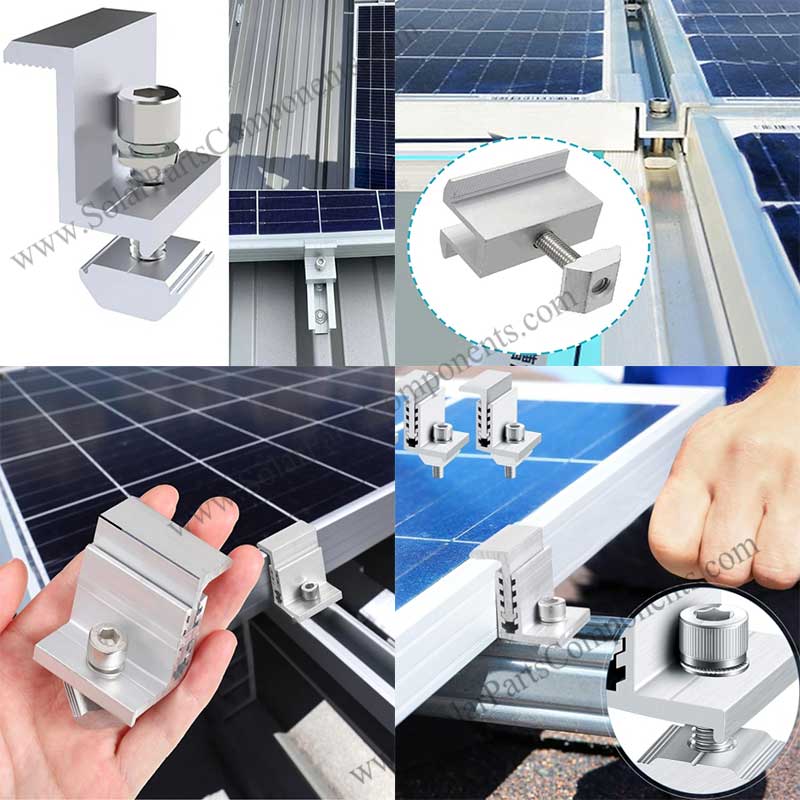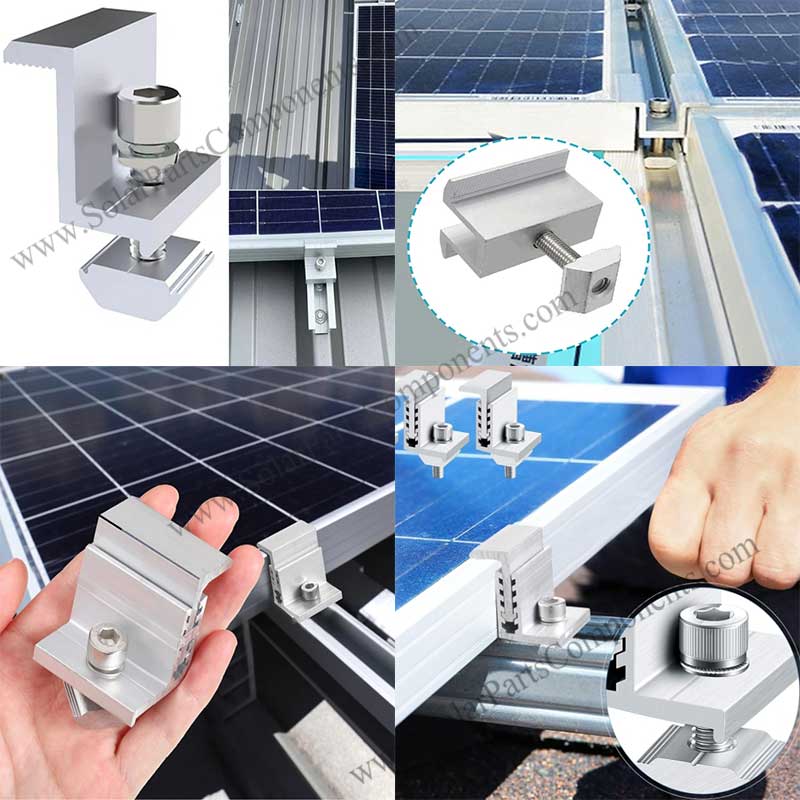Improve wind and earthquake resistance: Solar panel module clamp greatly enhance the system’s wind resistance by firmly fixing the photovoltaic modules on the bracket, preventing strong winds, heavy rain or other bad weather from damaging the modules.
In addition, they also enhance the system’s earthquake resistance, ensuring that the modules will not loosen in a vibrating environment.
—- Protect photovoltaic modules: Solar panel module mid clamp effectively prevent foreign substances such as dust and moisture from entering by fixing the edges of the modules, avoiding corrosion of the electrical parts of the modules.
Mid clamp ensures that adjacent modules do not collide with each other, preventing mechanical damage caused by squeezing or movement.
—- Evenly distribute the load: Photovoltaic modules are affected by loads such as wind, snow, and temperature changes during operation.
Mid clamp can ensure that adjacent modules evenly bear external loads and prevent individual modules from being damaged by excessive pressure.
At the same time, the reasonable installation of end clamp helps to evenly distribute external forces to the entire bracket system, extending the service life of the modules and brackets.
Precautions during installation
—- Torque control: When tightening the solar panel module clamp, use a torque wrench to control the applied force to avoid over-tightening that may cause the photovoltaic modules to break or the bracket to deform.
—-Waterproof sealing: The mid clamps should fit tightly with the photovoltaic modules to ensure sealing and prevent moisture and dust from entering, especially in rainy or windy areas.
—-Module spacing: When installing the mid clamps, ensure that the spacing between the modules meets the design requirements to avoid the module spacing being too small to affect the heat dissipation effect, or the spacing being too large to cause structural instability.
Conclusion
The correct installation of the solar panel module clamp is a key step to ensure the stable operation of the solar photovoltaic system.
They can not only firmly fix the photovoltaic modules, but also enhance the system’s wind and earthquake resistance, protect the modules from external environmental damage, and extend the system life.
By reasonably selecting and installing these components, the photovoltaic system can operate stably in various harsh environments and ensure long-term efficient power generation.









